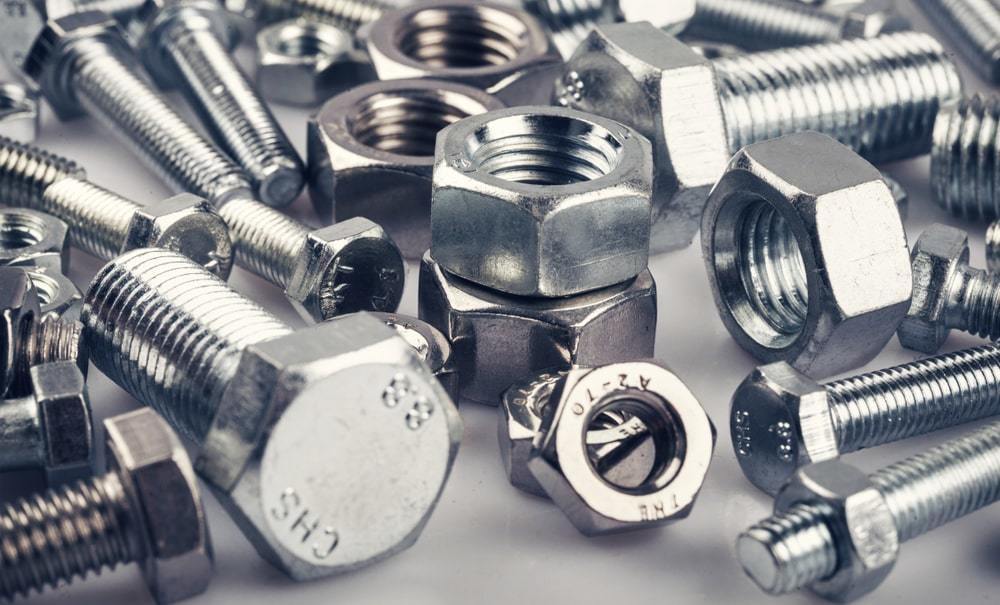
Why Quality Nuts and Bolts are important for Construction
In construction, fasteners are used to make temporary connections between various materials.
Different projects call for multiple types of fasteners to be used when building. In the building industry, fasteners play a critical role in keeping everything together!
Most industries that generate goods that need machinery or vehicle parts assembly rely heavily on fasteners. It is the reason why it is crucial to use only high-quality bolts and nuts. If you want to find one, you must visit Miami Stainless online.
The Variety and Function of Bolts Used in the Building Industry
They are essential in the building sector, and bolts are utilized virtually everywhere!
The common misconception regarding huge construction projects is that they only involve massive machinery and tons of steel. The opposite is true. There is an equal demand for nuts, washers, screws, and bolts, among other fasteners.
In the building industry, bolts come in various styles and sizes. Some of the most popular bolts in the building industry are listed below.
- Hex Nut Bolts
Hex bolts are used in various applications, including construction and machinery, and feature machine threads and hexagonal heads that can be fastened using a nut or a tapped hole. These bolts have various uses, including fastening steel, wood, and other materials.
Hex bolts see a widespread application in the construction of buildings, bridges, highway and road infrastructure, docks, and more. They are low-carbon steel and can be fully or partially threaded.
- Lag Bolts
Lagging bolts, often called lag screws, have been effectively utilized for many years to assemble massive amounts of wood. The ease with which these bolts can be installed is a significant factor in their widespread acceptance. These bolts are self-tightening; they achieve this by burrowing into the material with coarse threads, forming a frictional connection.
- U-Bolts
These nuts and bolts are U-shaped, as their name implies. These bolts have seen extensive application in support of gas and liquid pipelines.
These bolts serve various purposes in the construction industry, from attaching engine shaft components to ensuring the integrity of a building’s foundation or roof. U bolts’ primary quality is the flexibility they may be adapted to meet specific needs, and their strength is a close second.
A U-bolt provides a clamping force between two components. You may get U-bolts in various materials, shapes, and finishes, including stainless steel, alloy steel, carbon steel, cadmium, fluorocarbon, zinc, and hot-dipped galvanized.
- Tension Control Bolts or TC Bolts
Tc bolts, also known as tension control bolts, are utilized extensively while constructing steel frames due to their extreme sturdiness. These bolts feature a rounded head and can’t be tightened using standard tools.
To adjust the tension, though, you’ll need a different kind of wrench. These fasteners can withstand significant vibrations as long as they’re appropriately put. Tc bolts are helpful since they do more than just prevent load reversals; they also help eliminate connection slippage.
- Achievement Bolts
These mechanical fasteners have a ring-shaped head and a threaded shaft. To secure shackles, cables, or ropes through an eye, eyebolts are used to fasten an eye to a fixed point.
The Variety and Function of Nuts Used in the Building Industry
Fasteners having a threaded holes are known as nuts. To securely attach two or more components, nuts are typically used in tandem with complementary bolts.
The friction between the threads (along with some elastic deformation) holds the two partners together, with some stretching of the bolt and some compression of the pieces being held together.
- M6 Nut
Commonly used to attach a nut or washer to the shank of a bolt or hex cap screw, this fastener has internal hexagonal threads. Due to their high tensile strength and reputation for reliability, these hex nuts are in high demand in the building industry, where they are used to finish off the work of hex bolts.
- Lock with Nylon Insert
Nylon lock nuts or stop nuts, sometimes referred to as, are of great value. The nylon insert, or collar, is narrower than the thread diameter. Collar deformation over mating diameter creates friction while the nylon insert lock nut is tightened.
- Jam Nuts
A jam nut, also known as a half-lock nut, is a type of nut that is flatter than regular nuts and is intended to be tightened by being “jammed” against another nut. Simply because it serves a particular purpose does not make a jam nut a lock nut.
The primary, thicker nut goes on once the jam nut has been inserted and tightened. The thread inside the jam nut slides when the two nuts are compressed, creating a clamping force.
Key Considerations When Buying Fasteners for Construction
These are made of metal and have a chamfered, rounded corner on the top and a flat, bearing surface on the bottom. Their ability to lock is facilitated by the deliberate deformation of their top heads. Their cone form makes them easy to position during automated assembly, making them a popular option for production runs of significant size.
- Material
Understand the need before settling on a fastener. When shopping for fasteners, stainless steel is always the most acceptable choice due to its durability and resistance to corrosion.
- Skull Forms
Understanding the specific requirements for the required head is also crucial. There are several types of screw heads, such as the flat head, truss head, and pan head. There is a particular need for each variety.
- Length
Where you can get, your fastener depends heavily on its length. The sizes range because various specifications are needed.
- Coating
Coatings can be applied to increase or improve corrosion resistance. Primarily, coatings are used, and zinc, hot-dip galvanizing, and chrome are the most popular.